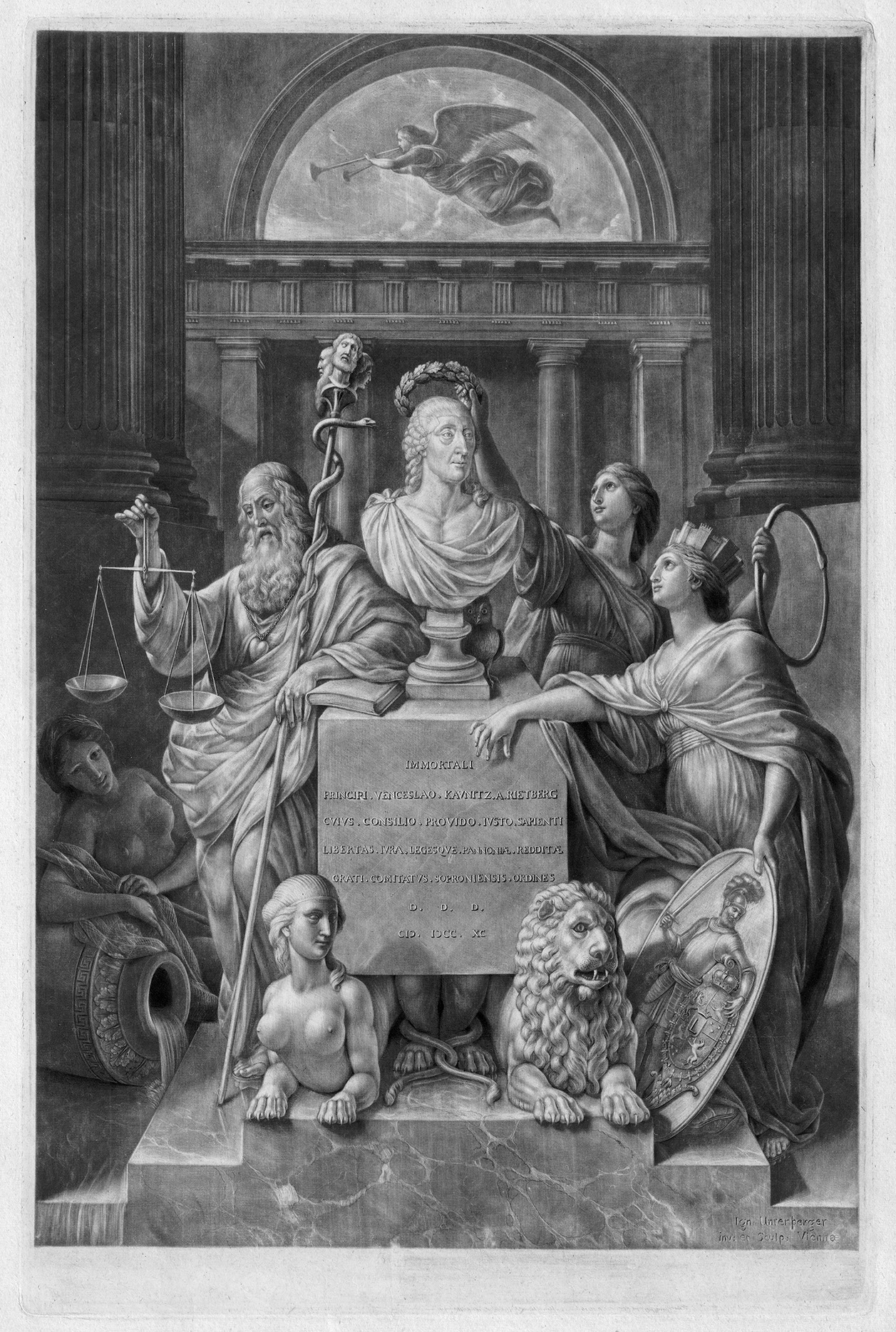Loading the page ...
Ignaz Unterberger
(1742 Cavalese – 1797 Vienna)
Allegory of the Imperial Prince Kaunitz. Mezzotint in brown. 56.7 x 37 cm. 1790. Nagler 4. Watermark: Letters.
Wenzel Anton Dominik Graf Kaunitz (1711–1794, Vienna) was one of the key figures in 18th century Austrian politics and one of the closest advisers to the Empress Maria Theresia and her son Joseph II. Foreign Minister from 1735, Kaunitz soon became State Chancellor and Aulic Councillor, both of which were important state offices. From 1764 he held the title of Imperial Prince of Kaunitz-Rietberg. The prince had great influence on the Empress Maria Theresia, in particular, and was thus able to initiate a large number of domestic reforms affecting, for example, the relationship between church and state, for which he is still known today. In addition, Kaunitz was a great art lover and installed a significant art gallery in his palace. From 1772 he was Protector of the Academy of Fine Arts in Vienna, in which capacity he patronised artists such as the South Tyrolean painter and printmaker, Ignaz Unterberger, who produced the present work in honour of the prince in 1790.
Unterberger came from a family of artists and was trained, amongst others, by his brother Christoph in Rome. In 1776 he went to Vienna, where he became a member of the Academy. In 1795 he was appointed imperial court painter. The artist left a relatively small but first-rate printed oeuvre. The impressive, multi-figured work dedicated to the prince can be seen as a demonstration of reverence for the great statesman and patron. The bust of the imperial prince rests at the centre of the composition on a marble pedestal borne by a lion and a sphinx and is flanked by allegorical figures acknowledging the far-sighted political decisions made by the homo politicus. Kaunitz has a wreath placed on his head by the personification of immortality, who is accompanied by the personification of Hungary (Pannonia) with wall coping and a shield, while on the left the goddess of the River Danube rests on an amphora. Next to her stands a bearded masculine figure holding a thyrsus and the scales of justice. The dedication on the pedestal of the monument says that the Hungarian administrative region of Sopron (Ödenburg) expresses its thanks to Kaunitz. The depiction is treated in a dignified, neoclassical idiom which betrays the influence of contemporaries such as Raphael Anton Mengs and Pompeo Batoni.
A very fine, velvety impression with narrow margins around the platemark. Minor ageing and traces of handling, otherwise in excellent condition.
Exh. cat. Herbst des Barock. Studien zum Stilwandel: Die Malerfamilie Keller (1740 bis 1904), ed. by Andreas Tacke, Munich/Berlin 1998, pp. 215–248, fig. p. 241.
Contact us for further information